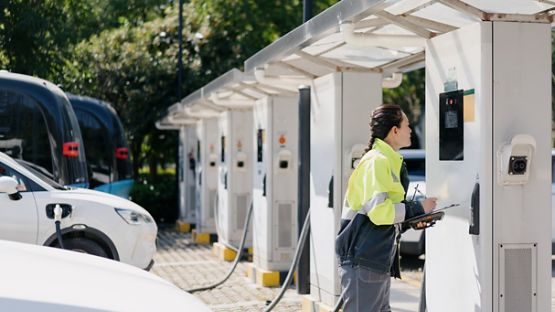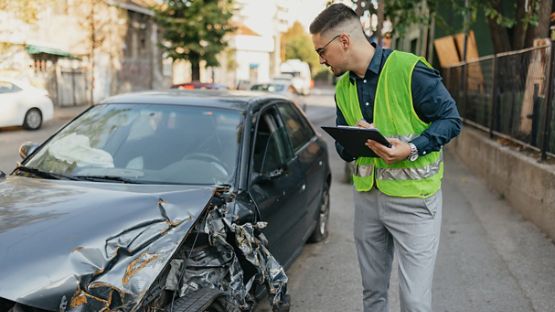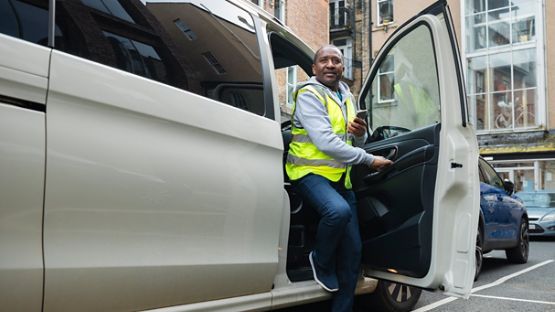In the world of heavy and light commercial vehicles, identifying high-risk drivers (HRD) can be key to preventing future collisions. Generally, a high-risk driver is someone who is more likely to be involved in a future collision than most drivers.
So how can you identify them? Some signs are more obvious: their lack of experience and abilities, general attitude, behaviors, and poor decision-making, such as driving in adverse weather and road conditions. Other qualities that increase the likelihood of being involved in a future collision include driving under the influence (whether that’s alcohol, drugs, or other medication) and general fatigue.
However, an HRD is not limited to only those traits.
The research on HRDs
The American Transportation Research Institute (ATRI) conducts extensive research on various aspects of the transportation industry, including driver safety. Their research on HRDs is carried out approximately every 4 years using a database of more than 500,000 drivers.
For drivers at high risk of collision, ATRI focuses on identifying unsafe behaviours and implementing preventative measures to improve road safety.
Since the first research in 2005, ATRI has listed 5 behaviours that are still included in each of the 4 studies1:
- Reckless or dangerous driving (114%)
- A conviction for non-use or incorrect use of turn signals (89%)
- A previous accident (88%)
- A violation for non-compliance with the right of way (85%)
- A conviction for incorrect or erratic lane changes (79%)
In its most recent research from 2022, ATRI’s predictive model showed that the top 5 predictors of crash risk were:
- Failure to yield the right of way (141%)
- Lack of use or inappropriate signal (116%)
- A previous collision (113%)
- Reckless/dangerous driving (104%)
- Failure to obey road signs (85%)
Best practices for identifying an HRD
Now that you’re aware of what to look out for, here are some steps you can take to keep roads safe from high-risk drivers:
Adopt a culture of road safety and open communication
Your vision as well as your corporate mission are the keys to success. Pass them on to your drivers to keep them inspired! Stay on top of what’s happening with your drivers and staff by practicing active listening and consistent communication.
Analyze and monitor your carrier profile
Thoroughly analyze your carrier profile (PEVL, CVOR, ACP) at least once a month. Review and monitor driver violations and collisions/accidents, making sure to take corrective action when needed. This means following up with your drivers and implementing appropriate action plans.
Track behavior and offenses
Use available tools (e.g., the professional driver record and the driving record) to track the behavior of heavy vehicle drivers. Identify and analyze trends, repeated violations, and recurring drivers on your carrier profile. This is a crucial step since frequent drivers with violations may pose a high risk of collisions. Follow this up by establishing an intervention strategy in collaboration with your team.
Use of telemetry and dash cams
By using telematics systems to monitor driver behavior (e.g., speeding, cornering, lane departure, harsh braking), you’ll be able to spot trends early and gain valuable insights to help you take proactive steps and implement necessary initiatives. This can include:
- Proactively alerting management using video segments so you can set up a strategy with the driver to reduce violations and even avoid a possible collision.
- Analyzing close calls/near miss events and using them to educate drivers on safe and responsible behaviours.
- Creating healthy and friendly competition internally using a driver leaderboard.
Implement regular training and team incentives
Training always pays off, as do road safety reminders and defensive driving training. Another way to encourage safe and responsible behaviour is to develop a team target as an additional incentive for your drivers.
The benefits of paying attention to unsafe behaviour
Your drivers leave many clues that can help you better understand them. Taking the time to analyze the signs and implement proactive measures can benefit everyone, from your drivers to your company and those on the road.
Resources:
- Learn more about ATRI
- Download the 2022 report
Disclaimer:
1This list is ranked in order of highest percentage for future crash probability based on specific violations, convictions, and prior crashes.













